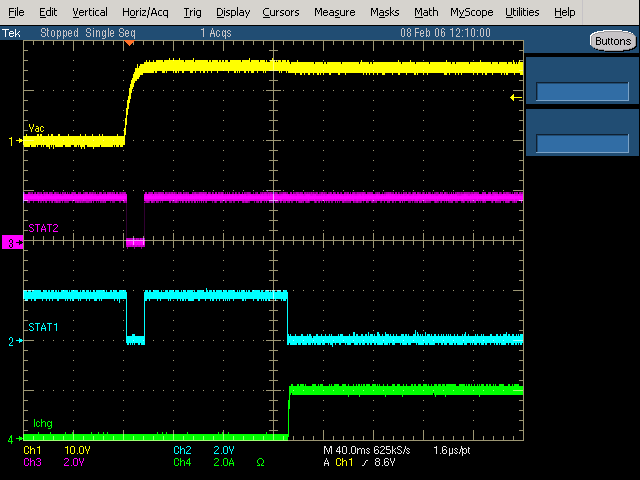Other Parts Discussed in Thread: BQ25756E, , TPS25948, BQ25756
Tool/software:
Hello,
I'm looking for a reliable solution to connect two LiPo 2S 7500 mAh packs in parallel, each with its own integrated BMS, in a system that uses a single TPS25730S + BQ25756E charger, charging at 3.75 A (0.5 C).
In certain situations, a second identical pack may be hot-plugged to extend runtime.
However, the end-user has no way to manually balance the two batteries before connecting them, which may lead to a voltage difference of several hundred millivolts. Once connected and balanced, both packs need to be charged.
Solutions considered:
- Direct parallel connection, but too risky due to potentially high balancing currents between the packs.
- Controlled balancing circuit prior to connection
- Measure ΔV between the two packs;
- If ΔV > 100 mV, activate a current-limited balancing path;
- Once voltages are close enough (ΔV < threshold), connect the second pack via a TPS25946.
- Bidirectional converter between the two batteries, before connecting them in parallel. Technically interesting active solution, but too bulky for my PCB constraints.
- Connect battery 2 to the input of the charger. Feasible, but battery 2 wouldn’t be charged unless a second charge path is added after battery 1, which would overly complicate the architecture compared to solution 2.
Current architecture under consideration:
A controlled passive balancing step before making the parallel connection, although I'm a bit concerned about the efficiency of this approach.

In this setup:
- As long as the packs are not balanced, the battery 2 TPS switch stays OFF. (Charging is blocked but it's acceptable);
- The TPS of battery 1 mainly acts as inrush limiter and provides UV/OV/OC protections.
I also considered an alternative where the more charged battery powers the system alone, until the voltages get close enough to safely connect both in parallel.

This would avoid passive balancing, but seems more complex to implement, especially during the transition phases.
I am seeking your technical feedback on the feasibility of these approaches, any experience or insights you may have from dealing with similar challenges, and suggestions for TI components if you believe my current choices could be improved.
I'm also wondering whether I'm overcomplicating the problem and if a simpler solution would be sufficient.
I haven’t finalized the schematic for this section yet, I’m still exploring viable architectures and suitable components.
I have already started working with the TPS25946 and have a question regarding the diode and resistor placed in parallel between the OUT and IN pins. I believe I understand their purpose, to enable the circuit during reverse conditions (e.g. during charging in my case). However, since the circuit is always powered by the battery in my setup, I’m wondering if these components serve any other function or protection, or if they can be omitted?

Thanks in advance for your help.
Valentin.



